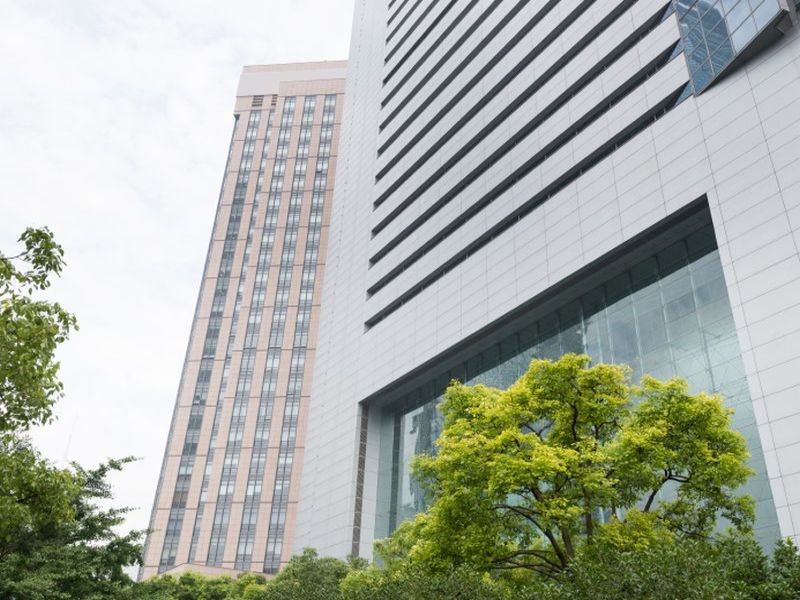By Amy Norton
HealthDay Reporter

TUESDAY, July 30, 2019 (HealthDay News) -- City dwellers who live on tree-lined streets might be happier and healthier for it, a large new study suggests.
The study, of nearly 47,000 urban residents, found that those who lived in areas shaded by tree canopy reported less psychological distress and better general health over six years.
Green grass, on the other hand, didn't cut it: People in neighborhoods with more grassy areas actually reported poorer health than those largely surrounded by concrete.
The researchers said the findings suggest there might be something particularly health-promoting about trees. Maybe people who have them nearby have more chances for walking and recreation, or enjoy a buffer against noise and traffic pollution, for example.
The bottom line: Trees seem to matter to our well-being, said Kathleen Wolf, a research social scientist at the University of Washington's College of the Environment, in Seattle.
Wolf, who was not involved in the study, said it adds to a body of research finding a link between "green space" and better health.
A U.K. study published last month is a case in point. It found that people who spent two hours a week outdoors gave higher ratings to their physical and mental health than those who preferred the great indoors.
"If you have one study showing an association," Wolf said, "it gives you a heads-up -- 'Hey, this is an interesting finding.'"
When multiple studies show the same pattern, it suggests something is really there, she added.
A strength of the new study is that it followed people over time, Wolf said, rather than measuring well-being only once.
On average, it found, city dwellers who lived near more tree canopy were less likely to develop new symptoms of psychological distress -- like nervousness, hopelessness and unexplained fatigue.
The benefit was seen among people living in areas with tree coverage of least 30% within a mile of home. Compared with residents with few nearby trees, they were about one-third less likely to report distress symptoms on a standard questionnaire.
They were also one-third less likely to downgrade ratings of their general health to "fair" or "poor."
Of course, there could be many things about living in greener areas that make people happier and healthier. But the researchers tried to account for those differences -- weighing factors like household income, education levels and marital status.
Even then, trees still mattered to mental and physical well-being.
Why would that be? Wolf pointed to various possibilities. Tree-lined streets and parks may give people more opportunities for exercise -- which, she noted, is important not only for physical well-being, but mental health, too.
There's also a theory that being out in nature offers a better sense of perspective, which makes our daily stresses seem less significant.
"Human beings tend to ruminate on the bad things that happen, rather than the good," Wolf said. Some of that mental playback may fade when you're outdoors, with things to see, smell and experience, she noted.
Living near grassy surroundings, on the other hand, was linked to higher odds of distress and poor health.
The study cannot reveal why, said Sjerp de Vries, a researcher with Wageningen University and Research in the Netherlands. But, he said, unlike grass, trees can make an area more walkable.
Trees are also more obvious, de Vries said. Tall trees, especially, make their presence known whether people are outside or inside.
Plus, de Vries noted, there is an argument to be made that trees are beneficial because they release chemicals called phytoncides, which may boost human immune function.
He wrote an editorial accompanying the new study, which was published online July 26 in JAMA Network Open.
The study results were based on 46,786 adults aged 45 and older in three large Australian cities. All remained in the same neighborhood over six years, and completed the same health questionnaires at the beginning and end of the study period.
It's possible, de Vries said, that healthier people chose to live in tree-lined areas. But other studies have suggested that "green space" has particular benefits for lower-income people, he noted. And they have less choice about where to live than their wealthier counterparts.
More information
The U.S. National Park Service has more on nature's health benefits.
Back

The news stories provided in Health News and our Health-E News Newsletter are a service of the nationally syndicated HealthDay® news and information company. Stories refer to national trends and breaking health news, and are not necessarily indicative of or always supported by our facility and providers. This information is provided for informational and educational purposes only, and is not intended to be a substitute for medical advice, diagnosis, or treatment.






